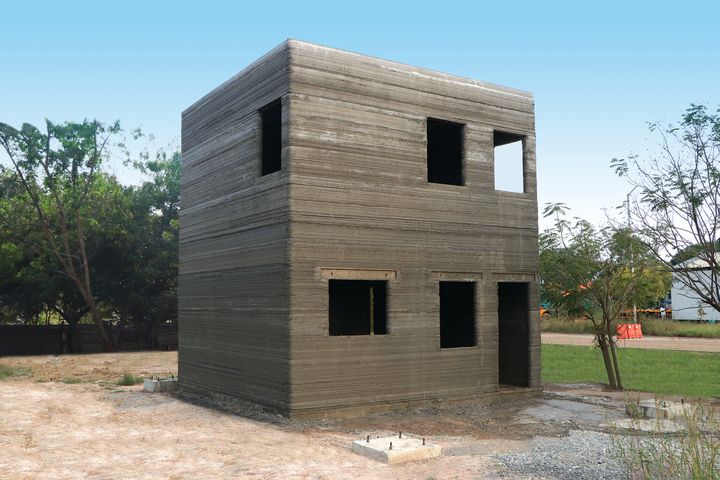
COBOD announced the completion of a notable construction 3D print in India, but there’s more to the story.
The Danish company has been working with India’s largest construction company, L&T Construction, to produce that country’s first multi-story 3D printed building. The 65sqm (700sf) building was recently completed, as shown above.
Note that construction 3D printers do not literally “print a house”; they instead 3D print the major concrete sections, including walls and foundations. They don’t install HVAC, electrical, plumbing, windows, etc., which are subsequently installed by conventional trades.
Nevertheless, this is an accomplishment, and not just for being the first 3D printed multi-story building in India. COBOD said the material used in the project was a special concrete mix created by L&T Construction themselves using locally sourced ingredients.
COBOD said that most construction 3D printers use “ready mix mortars” as they are easy to extrude. This is due to their maximum particle size of 4mm, but the lack of larger particles means the resulting extrusions are not particularly strong. Strong concrete requires the use of larger stones that create the strength.
This suggests that typical construction 3D printers may produce weaker structures that might not even pass local building codes. COBOD says:
“Ready mix mortars have a max particle size of 4mm and are generally much more expensive than concrete and less strong due to the absence of coarser particles. In addition, in most countries the use of mortars does not live up to the building code.”
In the case of the India project, L&T Construction was able to concoct a concrete recipe that was not only financially efficient, but was strong enough to pass local building codes.
I agree with COBOD that this could be a milestone. They say:
“The printing made by L&T marks an important new milestone, where a conventional type real concrete has been printed by a conventional construction company now having adopted the 3D printing technology, believed to be the future of construction.”
The fact that actual construction companies can now be assured they can use “real” concrete in a construction 3D printer will no doubt vastly increase their confidence in the system, and perhaps lead to additional projects for COBOD.
COBOD has now completed demonstration construction 3D printing projects in Europe, Africa and now Asia, all through partnerships with notable local construction companies.
I’m wondering where they are going next?
Via COBOD
